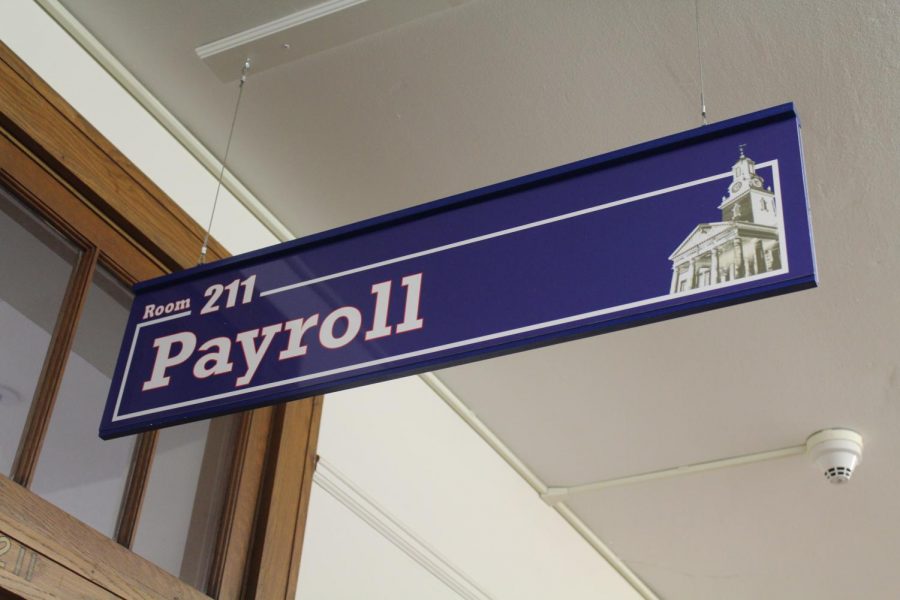Minimum Wage Change Begins Takeover
September 28, 2019
A financial wave change hit the wallets of several Connecticut state employees this week as the minimum wage increased to $11 per hour.
The change came after Governor Ned Lamont approved a number of bills advocating to gradually increase the minimum wage by 12 percent annually in a four-year period back in May 2019. By 2023, the new wage will become $15 an hour.
The wage change, implemented on Oct. 1, will be followed by four other pay increases annually on Oct. 15, each being less than $1. According to the H.B. 5004, the proposed increase will result in increased costs of $1.1 million in the fiscal year of 2020.
“Working families are central to our state’s success and we need to do more to support their long-term financial stability,” Lamont said during his budget proposal. “A $15 minimum wage, enacted responsibly and over time would raise wages for almost a third of our workforce.”
According to the Labor and Public Committee, roughly 60 percent of low-wage workers are 25 or older, while just 10 percent are under 20 years old. The HB 7191 claims, “raising the minimum wage will lift families out of poverty, reduce the burden on state services and help grow the economy.”
Although Lamont claims the increase will be a fair, livable wage for Connecticut residents and would keep current residents from fleeing the state, younger residents beg to differ.
Despite not feeling the direct impact of the wage change, CCSU Sodexo employee Nehway Sahn is not in favor of the gradual increase.
“If you think about how 18, 19, 20 year-olds were living back in the 60s or earlier, they were able to provide for themselves, like having a house or getting married,” Sahn mentioned.
“In this day and age, that is simply not the case because the older folks have the jobs. So if you start to give an adequate, self-sufficient amount of money to young people as they enter their stage of adulthood, then they can learn how to accumulate that for the future,” she continued.
CCSU Sodexo student workers receive their wage based on how the state mandates it. Typically, the non-union workers, which are student employees, receive pay based on the Connecticut Department of Labor, according to Jonathan Small, general manager for Sodexo at Central Connecticut.
“Our pay for student workers is higher than [Connecticut’s] minimum wage, it’s set by the Connecticut Department of Labor. It’s a flat rate and plus benefits,” Small explained. In lieu of benefits, student employees receive monetary compensation thus ranging pay from $13.13 – $14.90.
As the state wage is projected to increase in the future, as will the wage of Sodexo student workers based on how the state mandates it.
For Sahn, being able receive the extra dollars allows her to maximize her savings while also providing “a bit more financial freedom and giving me the ability to provide for myself a bit more.”
“With the extra money I probably will be able to, on a more personal experience, place a greater amount of money into my savings. Budgeting would be a bit easier with the $15 wage,” Sahn expressed.
Small acknowledges that being one of the higher-paying employers on campus is beneficial for students who work for them, calling the wage they receive “a livable wage,” for the current stage of life.
Having been a college employee himself, he recalls how ideal an on-campus job was.
“I think it’s nice, the benefit of being able to work on a college is not having to use a car and rolling out of bed to come to work,” Small admitted. “There are definitely advantageous to being a college worker, so it’s nice that we pay a good wage. I wouldn’t feel good about paying minimum wage.”
Though the minimum wage change was just enacted, the labor commissioner is wary of potential failures and is prepared make changes to H.B. 5004 along the way if the bill creates negative growth for two or more consecutive quarters.
Until then low-wage workers will have to wait and see if the 90 cent increase will make a positive impact on their bank account.







